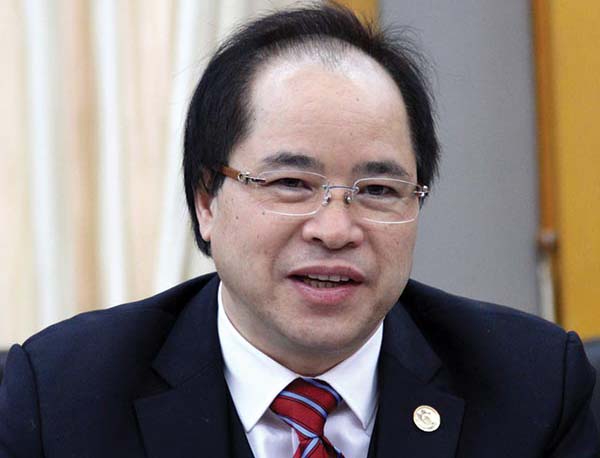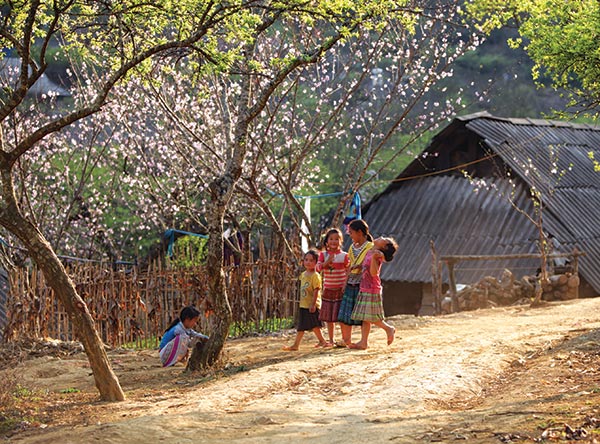Northwest region brimming with untapped potential

What do you expect from this investment promotion conference?
We would like to promote the potential of the northwestern region. This is a chance for investors and companies to learn about proposed investment projects, as well as policies and incentives in the region. The conference will be a platform for investors to discuss and exchange business opportunities and find new partners. Currently, the northwestern region is among the poorest areas in the country, and its economy cannot develop significantly without private investments. We also expect that provincial leaders can take this opportunity to find out what investors are looking for so they can tailor their policies and management methods accordingly. As you know, the northwestern region is a very attractive destination for tourists – both locals and foreigners – and so through this conference, we would to promote the tourism industry and ultimately attract more tourists to the region.
The tourism industry here remains underdeveloped, with a lack of services such as hotels and entertainment facilities. How can the tourism potential here be tapped effectively?
Boosting regional links is vital to promote the northwestern region’s economic development, particularly in the tourism sector. The links should cover infrastructure investment and tours to connect diverse tourism attractions within the region. We are planning major tourism products for each locality, including Dien Bien, and will focus on tours to historical sites and on eco-tourism in Ha Giang. Unfortunately, due to its poor infrastructure, the tourism industry in the northwestern region has not yet fully taken off. Our only tourism town really is Sapa. The infrastructure in our other tourism sites like Mu Cang Chai, Dong Van, and Dien Bien has not been invested in significantly. As such, tourism development must go hand-in-hand with the development of our transport infrastructure. Also, the range of tourism services must be diversified to meet increasing visitors’ demands. We have called for private investments in our tourism sector, and some companies have responded to our call and have initiated their investment plans here.

Despite suffering from a higher level of poverty, the country’s northwestern region has huge investment appeal
Apart from the tourism industry, what will be the main pillars to support the northwestern region’s economic development?
In terms of boosting economic development within the region, the main pillar is still agriculture and forestry, with agriculture-forestry-fisheries accounting for 80 per cent of the total workforce. The region has great advantages in these fields with its eight million hectares of forests and two billion cubic metres of water. The northwestern region also has great potential in the cultivation of cash crops such as rubber, tea, coffee – and in the near future – macadamia plants. Several plants, including cardamom and medlar, will also be developed in the region, and we are currently considering scientific and technological processes to boost their commercial value.
Unfortunately, effectively tapping our huge water resources has created headaches for us. Several localities have piloted tuna and sturgeon husbandry projects, but finding markets for the product has proven challenging. If this can be addressed, raising such fish could provide employment and decent incomes for farmers of the northwestern provinces.
The northwestern region is home to different ethnic minority groups which still struggle to earn a living. What can be done in the near future to improve people’s living standards there?
In my view, several of the existing policies are inappropriate. For instance, in return for tending to one hectare of forest, local people are paid VND200,000 ($9.6) per year, or less than $1 a month, which is rather low. This needs to be raised if local people are to be able to live off this work. In reality, many people belonging to ethnic minority groups are inclined to wait for the state to take the initiative. So I think it is important to have in place suitable policies that encourage people to engage in production and business activities rather than simply providing subsidies.
One of the greatest concerns in the region at the moment is the high rate of unemployment. Many students here fail to find work after graduation, and Thanh Hoa province has over 28,000 unemployed graduates holding bachelor and master degrees. This has gone hand-in-hand with the opening of many colleges, and this situation obviously can’t continue. Vocational training for labourers seeking work abroad has proven to be a good approach to tackle unemployment in the region as this provides income and helps change people’s mindset in terms of working for a living. It is also necessary to build a successful household business model at village level, which will then spread as a success story and in so doing it will change people’s attitude.
What the stars mean:
★ Poor ★ ★ Promising ★★★ Good ★★★★ Very good ★★★★★ Exceptional
Latest News
More News
- Global partnerships key to Vietnam’s IFC development (December 26, 2025 | 16:18)
- Vingroup pulls out of bid to invest in North-South high-speed railway (December 26, 2025 | 11:42)
- Strengthening supply chains through trade promotions and customs reform (December 24, 2025 | 14:00)
- PM orders investment model for North–South high-speed rail (December 22, 2025 | 17:43)
- LS Eco Energy to invest in Vietnam rare earth sector (December 22, 2025 | 17:31)
- Government moves to establish International Financial Centre (December 21, 2025 | 21:00)
- Vietnam's IFC to target global investment flows (December 21, 2025 | 18:00)
- Two national hospitals expand capacity with new facilities (December 20, 2025 | 09:00)
- Ha Tinh breaks ground on major Vingroup industrial and energy projects (December 19, 2025 | 18:24)
- EVN launches major power infrastructure projects nationwide (December 19, 2025 | 18:17)

















 Mobile Version
Mobile Version